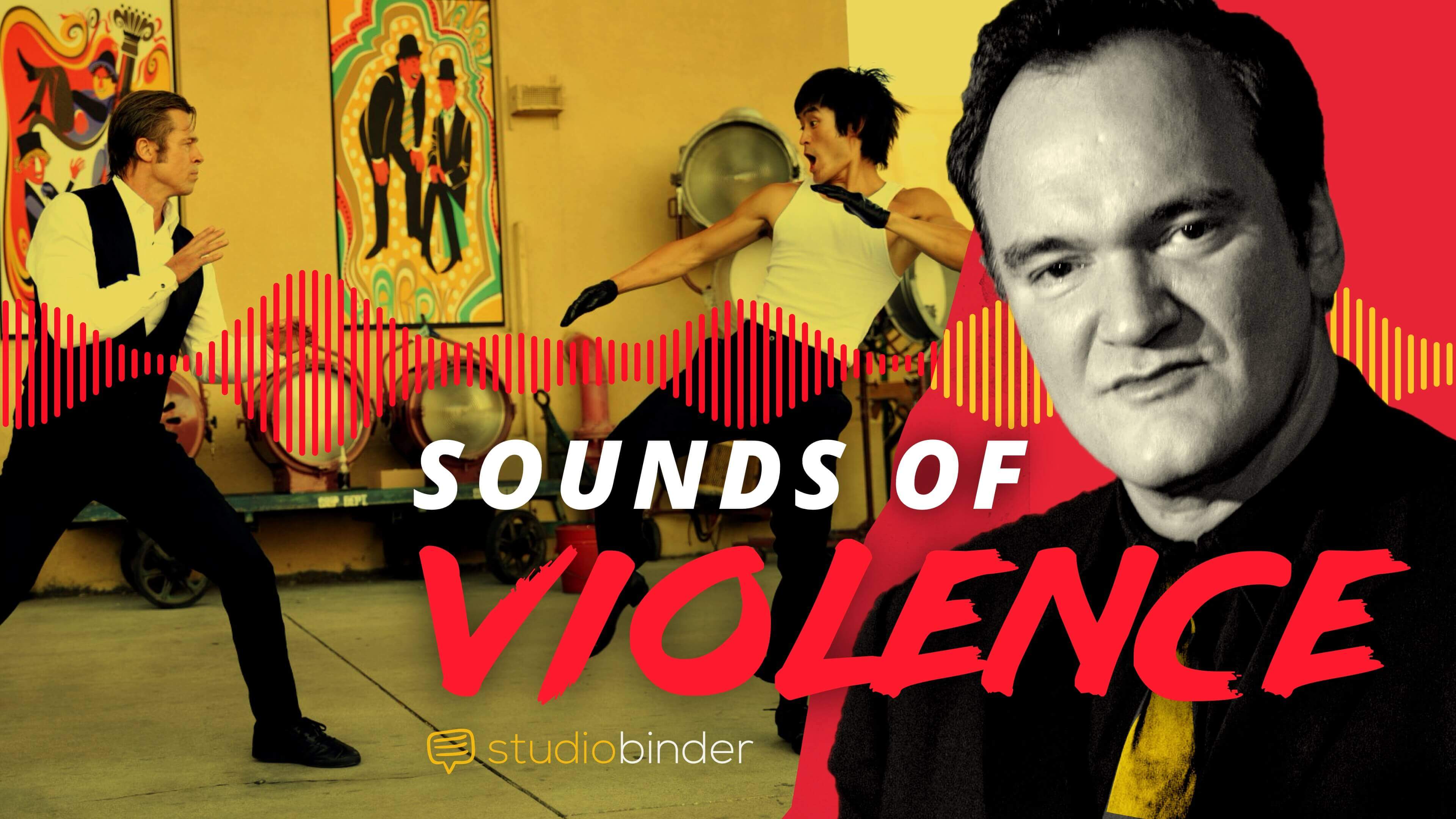Have you ever found yourself in a situation where you need to separate sound from video but don’t know where to start? Let me tell you, you’re not alone. In today’s digital world, editing audio and video has become an essential skill, whether you're a YouTuber, a podcaster, or just someone who wants to share better-quality content with friends. But don’t worry, I’ve got your back. This guide will walk you through how to separate sound from video like a pro.
Nowadays, almost everyone owns a smartphone or a laptop, and these devices come with amazing tools that can make editing a breeze. The good news is, you don’t need to be an expert to separate sound from video. With the right tools and techniques, anyone can do it. And trust me, the results will blow your mind!
Before we dive deep into the process, let’s talk about why separating sound from video matters. Whether you’re removing background noise, enhancing audio quality, or syncing your audio with another video, mastering this skill will elevate your content game. So, buckle up, because we’re about to take you on a journey to becoming a sound-separating wizard.
- 5movierulz Download 2023 Your Ultimate Guide To Movie Streaming And Beyond
- Unveiling The Magic Of Moviespoint Your Ultimate Movie Streaming Hub
Why Separating Sound from Video Matters
Let’s face it, not every video you shoot will have perfect audio. Sometimes, the mic doesn’t pick up the sound clearly, or there’s unwanted background noise that ruins the whole vibe. That’s where separating sound from video comes in handy. By isolating the audio, you can edit it separately, remove unwanted parts, or even replace it with something better. It’s like giving your video a second chance to shine.
Here are some reasons why separating sound from video is important:
- Enhances audio clarity and quality
- Removes unwanted background noise
- Allows for better audio editing
- Helps in creating professional-grade content
- Enables you to sync audio with different visuals
Imagine you’ve recorded a beautiful sunset video, but the audio is filled with traffic noise. By separating the sound, you can replace it with calming ocean waves or even a killer soundtrack. It’s like magic, but with technology.
- Bolly4u Hub Web Series Your Ultimate Destination For Bollywood Entertainment
- Telugu Movie Rulz 2024 The Ultimate Guide To Blockbuster Cinema
Tools You Need to Separate Sound from Video
Now that you understand why separating sound from video is important, let’s talk about the tools you’ll need. Thankfully, you don’t have to break the bank to get started. There are plenty of free and paid tools available that can help you achieve professional results.
Free Tools
For those on a budget, here are some free tools that you can use:
- VLC Media Player: A versatile media player that also allows you to extract audio from videos.
- Audacity: An open-source audio editor that’s perfect for editing and enhancing your extracted audio.
- Online Converters: Websites like Online Audio Converter or Convertio offer easy-to-use interfaces for extracting audio from videos.
Paid Tools
If you’re serious about content creation, investing in paid tools might be worth it. Here are some popular options:
- Adobe Premiere Pro: A professional-grade video editor that makes separating sound from video a breeze.
- Final Cut Pro: A Mac-exclusive video editor that offers advanced audio separation features.
- DaVinci Resolve: A powerful tool that combines video editing, color correction, and audio editing in one package.
Remember, the tool you choose will depend on your skill level, budget, and the complexity of your project. Don’t be afraid to experiment with different options to find what works best for you.
Step-by-Step Guide to Separate Sound from Video
Ready to roll up your sleeves and get started? Here’s a step-by-step guide to help you separate sound from video like a pro:
Step 1: Choose Your Tool
The first step is to choose the right tool for the job. Whether you go with VLC, Audacity, or a more advanced software like Adobe Premiere Pro, make sure it fits your needs and skill level. For beginners, VLC is a great place to start because it’s simple and user-friendly.
Step 2: Import Your Video
Once you’ve chosen your tool, import your video file into the software. Most tools will allow you to drag and drop the file, making the process super easy. If you’re using VLC, simply open the media file and navigate to the “Convert/Save” option.
Step 3: Extract the Audio
Now comes the fun part – extracting the audio. In VLC, you can choose the audio format you want to save the file as, such as MP3 or WAV. For higher-quality audio, WAV is usually the better choice. Once you’ve selected the format, hit “Start” and let the software do its magic.
Step 4: Edit the Audio
After extracting the audio, you can use an audio editor like Audacity to enhance its quality. Remove unwanted noise, adjust the volume, or even add effects to make it sound more professional. Don’t be afraid to play around with different settings until you’re satisfied with the results.
Step 5: Save and Export
Once you’re happy with your edits, it’s time to save and export your audio file. Most tools will allow you to save the file in various formats, so choose the one that best suits your needs. And just like that, you’ve successfully separated sound from video!
Common Mistakes to Avoid
While separating sound from video might seem straightforward, there are a few common mistakes that even seasoned editors make. Here are some things to watch out for:
- Not Saving Original Files: Always keep a backup of your original video and audio files in case something goes wrong.
- Over-Editing: It’s easy to get carried away with editing, but remember that less is often more. Too many effects can make your audio sound unnatural.
- Ignoring File Formats: Make sure you’re saving your audio in the right format for your intended use. For example, MP3 is great for sharing online, but WAV is better for professional editing.
By avoiding these common pitfalls, you’ll save yourself a lot of headaches down the road.
Tips for Better Audio Separation
Here are some tips to help you achieve better results when separating sound from video:
- Use High-Quality Equipment: Invest in a good microphone and camera to capture better-quality audio and video from the start.
- Record in a Quiet Environment: Minimize background noise by recording in a quiet space. This will make the editing process much easier.
- Experiment with Settings: Don’t be afraid to try different settings and tools to find what works best for your project.
Remember, practice makes perfect. The more you experiment with separating sound from video, the better you’ll get at it.
Data and Statistics to Support Your Journey
According to a recent study, over 500 hours of video are uploaded to YouTube every minute. With so much content out there, having high-quality audio can make all the difference in standing out from the crowd. In fact, 85% of viewers watch videos on social media without sound, making it crucial to have engaging visuals and subtitles. But for those who do listen, having clear and crisp audio can significantly enhance their viewing experience.
Additionally, a survey conducted by Wistia found that videos with better audio quality tend to have higher engagement rates. This means that separating sound from video and enhancing its quality can directly impact how your audience interacts with your content.
Advanced Techniques for Pro Editors
For those looking to take their audio separation skills to the next level, here are some advanced techniques to try:
1. Multitrack Editing
If you’re using a professional-grade software like Adobe Premiere Pro or DaVinci Resolve, you can use multitrack editing to work on different audio tracks simultaneously. This allows you to fine-tune each track and create a more polished final product.
2. Noise Reduction
Noise reduction is a powerful tool that can help eliminate unwanted background noise from your audio. Most advanced audio editors come with built-in noise reduction features that make this process a breeze.
3. Audio Normalization
Audio normalization ensures that all your audio tracks have consistent volume levels. This is especially important if you’re working with multiple clips that were recorded at different volumes.
By mastering these advanced techniques, you’ll be able to create content that rivals even the most seasoned professionals.
Final Thoughts: Your Next Steps
Separating sound from video might seem intimidating at first, but with the right tools and techniques, anyone can do it. Whether you’re a beginner or a seasoned editor, the key is to keep practicing and experimenting until you find what works best for you.
So, what are you waiting for? Grab your favorite tool, import your video, and start separating sound from video like a pro. And don’t forget to share your results with us in the comments below. We’d love to hear about your journey and how this guide helped you improve your content game.
Until next time, keep creating, keep editing, and keep inspiring others with your amazing content!
Table of Contents
- Why Separating Sound from Video Matters
- Tools You Need to Separate Sound from Video
- Step-by-Step Guide to Separate Sound from Video
- Common Mistakes to Avoid
- Tips for Better Audio Separation
- Data and Statistics to Support Your Journey
- Advanced Techniques for Pro Editors
- Final Thoughts: Your Next Steps



Detail Author:
- Name : Kaylie Cassin
- Username : greenfelder.rahsaan
- Email : qlangworth@lesch.com
- Birthdate : 1976-05-22
- Address : 8928 Fritsch Mountains Tanyastad, MT 51799
- Phone : +1-860-769-2625
- Company : DuBuque, Douglas and Block
- Job : Fishing OR Forestry Supervisor
- Bio : Reprehenderit qui ratione eveniet. Sed tenetur ipsum dolores quas. Sit non quos corporis voluptatem eos quae.
Socials
linkedin:
- url : https://linkedin.com/in/nannie_gerhold
- username : nannie_gerhold
- bio : Minima consequatur rerum et consectetur saepe.
- followers : 391
- following : 1452
facebook:
- url : https://facebook.com/gerholdn
- username : gerholdn
- bio : Quos voluptate consequatur exercitationem eum quae.
- followers : 5154
- following : 948
twitter:
- url : https://twitter.com/nannie.gerhold
- username : nannie.gerhold
- bio : Aut et rerum aut. Distinctio consequatur modi voluptas. Pariatur inventore saepe quis ratione qui accusamus.
- followers : 4229
- following : 992